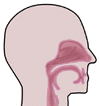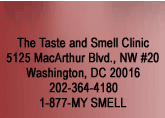  |
||
 |
There is an intimate physiological, historical and financial connection between fragrance and memory. This is an important concept in the fragrance industry since companies which make perfumes, colognes, toilet waters, etc. depend for marketing success not only upon product loyalty by name for their success but also upon odor recognition so that the user will remember their specific product. The economic, social and hedonic concepts of this relationship are discussed in an article in the December 2002 issue of Self magazine whereas the scientific aspects of the concept of fragrance and memory are discussed by Dr. Robert I. Henkin. Physiologically, odor and memory are linked anatomically and functionally. Once fragrance enters the nose the odor is perceived through three major initial brain pathways-(1) the prefrontal cortex, (2) the temporal cortex and (3) olfactory pathways leading to the hypothalamus. Each of these systems contribute to the general functional anatomical brain region called the limbic system. It is this general limbic system which is intimately involved with memory. Indeed, 80% of the brain is the so called paleocortex or "old cortex" whose major function in the primitive world was to perceive odors in order for animals to (1) seek and find food, (2) seek and find an appropriate mate and (3) stay out of trouble by avoiding enemies who smell different and who could injure them. By using this distance sense which could assist in performance of these three important activities animals could expend the least amount of energy, conserve their precious endogenous resources and survive in a hostile world environment. However, in order to accomplish these tasks and survive successfully the organism had to "remember" the character of these odors since if they were forgotten, each of these critical functions could not be performed successfully. In practical marketing terms there are many examples of this intimate connection between fragrance and memory, both positive and negative. In terms of positive reinforcement if a fragrance once worn resulted in a successful interpersonal interaction-e.g. between a young woman and her beau-then that fragrance stuck in her memory as the one she would like to wear on any date or socially important occasion. The odor of a fir tree at Christmas or the odor of a turkey cooking at Thanksgiving may engender memories and feelings of each holiday and bring satisfaction related to the holiday based upon memories of these powerful odors. On the other hand, in terms of negative reinforcement if a patient were to drink coffee before having powerful chemotherapy for a cancer treatment the odor of coffee brewing may engender the discomfort of the chemotherapy and its odor would engender the negative association of the unpleasantness associated with the medical treatment. The important physiological, anatomical and functional connections between odor and memory have been used to engineer fragrance products which take advantage of these connections and serve as a foundation for an entire industry which uses fragrance and memory to generate ambiance, style and income. This and other aspects of odor and memory are discussed in the December 2002 issue of Self magazine in which Dr. Robert I. Henkin discusses their anatomical and neural functional connections.
Home
| The Clinic | Diagnosis
| Treatment | FAQ
| Press |
|